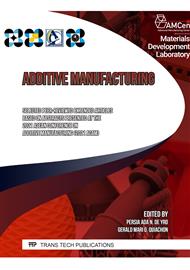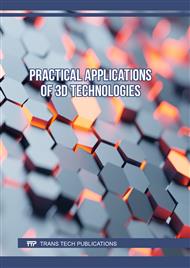p.1
p.7
p.15
p.21
p.29
Design and Simulation of 3D-Printed Wastewater Filter Column Rototypes with Various Flow Configurations
Abstract:
Chromium ions and other heavy metals discarded from major industries, if left unchecked, will make their way into waterways and may contaminate food crops, which can cause various chronic and acute health problems. As such, the Department of Science and Technology - Philippine Nuclear Research Institute (DOST-PNRI) developed radiation-grafted wastewater filters that selectively collect trivalent chromium ions from wastewater. To house these filters with the appropriate flow characteristics, column enclosures suitable for rapid prototyping via additive manufacturing, were designed and simulated. The column has two main components: the main chamber, which houses the filter; and an inner core, where the filter fabric is wound, and which evenly distributes the water flow along its length. Different core slit configurations were presented, giving emphasis on the flow uniformity, with the aim of maximizing the filter life.
Info:
Periodical:
Pages:
7-13
Citation:
Online since:
November 2022
Price:
Сopyright:
© 2022 Trans Tech Publications Ltd. All Rights Reserved
Share:
Citation:



